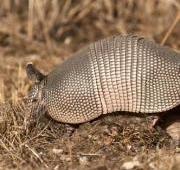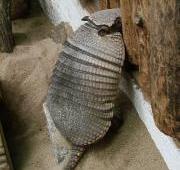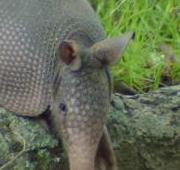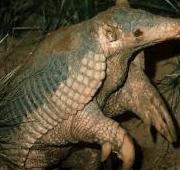 The armadillo is native to both North America and South America, although only one species of Armadillo is found in the United States.
The armadillo is native to both North America and South America, although only one species of Armadillo is found in the United States.  The average armadillo measures around 75cm in length, including the tail but the giant armadillo can grow to more than 1.5m long and the miniature pink fairy armadillo (the smallest armadillo species) only gets to around 10cm in length.
The average armadillo measures around 75cm in length, including the tail but the giant armadillo can grow to more than 1.5m long and the miniature pink fairy armadillo (the smallest armadillo species) only gets to around 10cm in length.


Despite the armadillo\'s odd shape, most armadillos can also reach a top speed of nearly 30 mph so can easily outrun most jungle predators. The primary predators of the armadillo are bears, wolves, wildcats and cougars.
The armadillo has very poor vision which makes the armadillo somewhat vulnerable in its jungle environment. The armadillo\'s armor is formed by plates of bone covered in relatively small overlapping scales. The scales of the armadillo are known as scutes and these scutes are made up of bone with a covering of horn.
The armadillo has additional armor that covers the top of its head, the upper parts of the armadillo\'s limbs and the armadillo\'s tail. The underside of the armadillo has no armour, and is simply covered with soft skin and fur, hence it\'s strategy of curling into a ball leaving only the armoured plates exposed.
The armadillo is generally an insectivore meaning that the diet of the armadillo is primarily comprised of insects. Armadillos also snack on other things including worms, spiders, snakes and frogs although the exact diet of the armadillo is very much dependent on the area which it inhabits.
Female armadillos give birth to around four young which are born after a gestation period of three to four months. After birth, the baby armadillos remain in the burrow for a few months, only feeding on their mothers milk. They then begin to forage with the mother, eventually leaving after six months to a year. Some species of armadillo are known to reproduce every year so a single female armadillo can produce up to 56 young over the course of her life.

